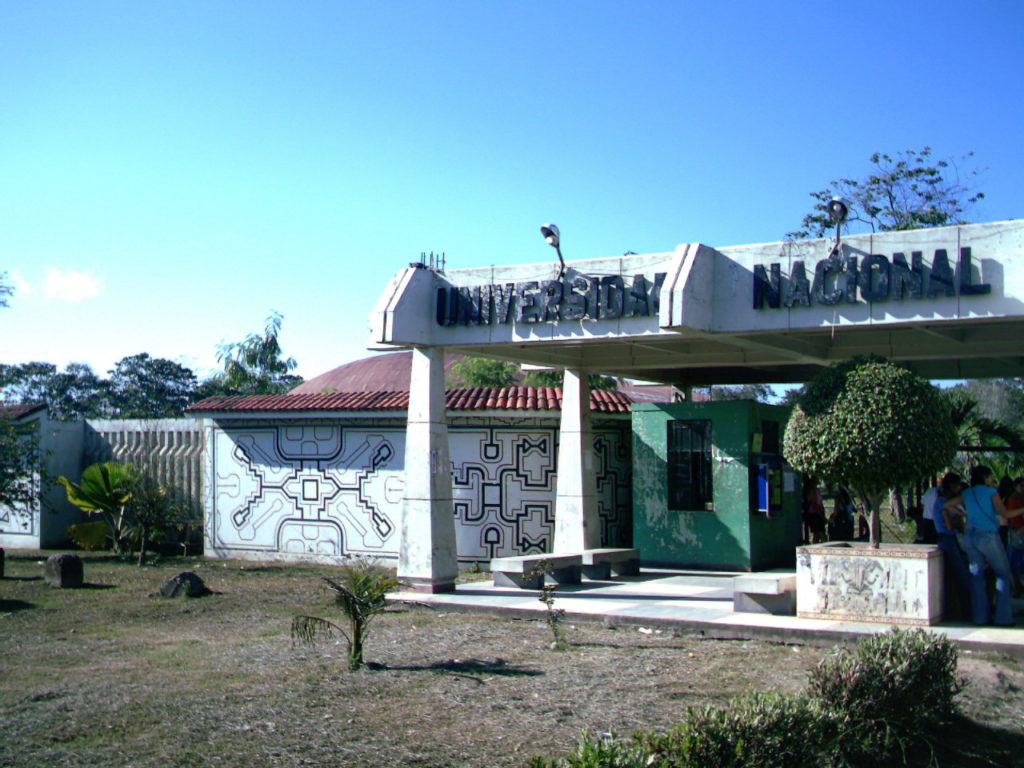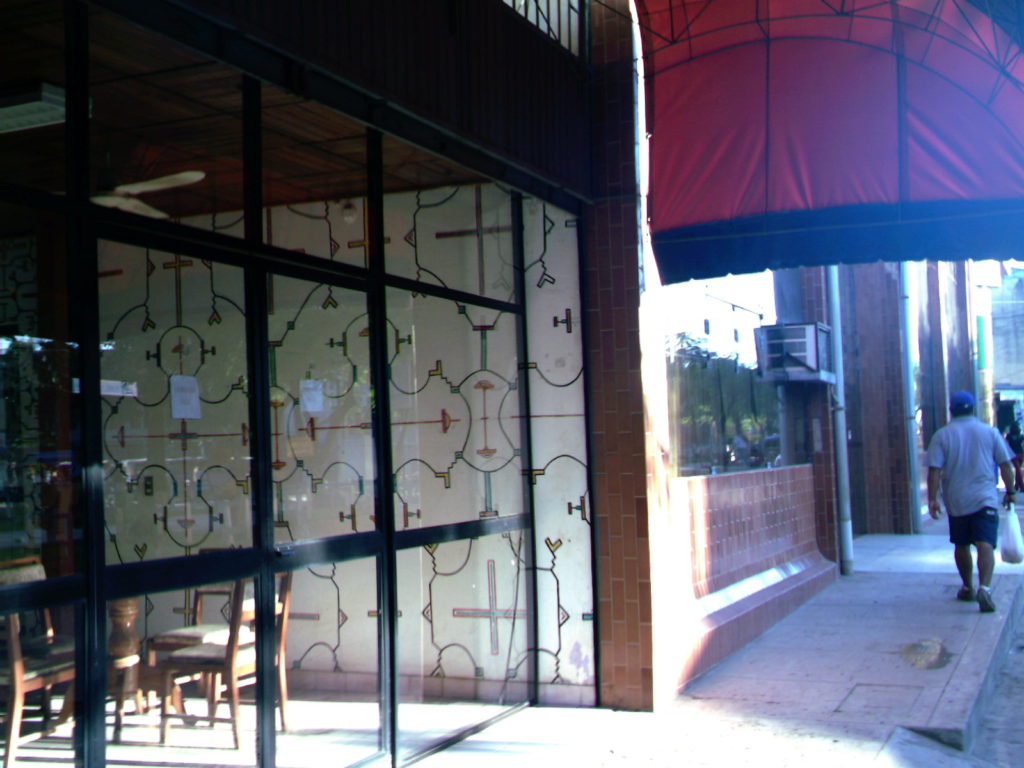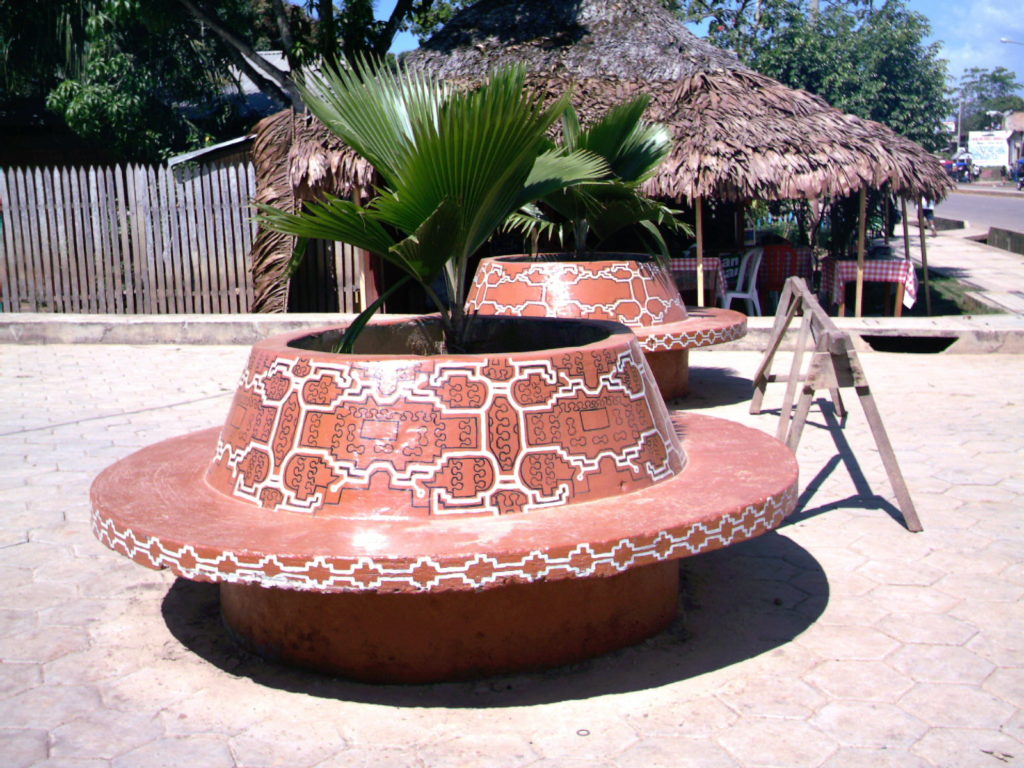
Here I am in Pucallpa, Peru—Amazonia. Everywhere I look I see ayahuasca visions. I just can’t seem to shake them from my mind. When I am in the Central Plaza, they are all around me. These “visions” are strolling down the street. They are moving right by and in front of me. They are in the restaurant where I eat. They permeate the hotel where I sleep.
And this is no illusion clouding my mind. This is “reality”! This is the Shipibo Motif.
Of the indigenous tribes still existing, the Shipibo comprise the largest in the Ucayali River region. Covering one third the length of Peru, the Ucayali stretches from Atayala downstream to Iquitos, where it meets the Amazon River. Pucallpa sits on the bank of the Ucayali, where the majority of the people are “mestizo,” a mix between native and Spanish descent.

Aware as I was that Shipibo tribal designs have their root in the Ayahuasca visionary experience, I still did not think that the people in Pucallpa were generally conscious of this fact. So I was surprised when they modified the clock tower in the downtown Plaza De Reloj, painting it with Shipibo patterns and adding stained glass (or is it plastic?!) panels that blatantly depict curanderos administering Ayahuasca. I was informed that the complete series is related to the sacred usage of Ayahuasca. As it turns out, many people here are aware of Ayahuasca’s influence and integration into what is now a rather modern culture.

This does not, however, mean it meets with local approval. The local mystique surrounding the medicine is based on a belief in its malicious use, rather than a simplistic “war on drugs.” People tend to associate ayahuasca more with the brujos and the dark arts than with the curanderos and the healing for which it has been more commonly applied.
Intermingled throughout central Pucallpa and the adjacent developments are depictions of the ayahuasca visionary state in the Shipibo motif. These design patterns appear as if subconsciously displayed. They are found on most forms of advertising and marketing. They can be seen on newspapers, billboards, fliers, store signs and on the local television station.
The Shipibo motif is prominently displayed in the architecture. Almost every class of structure has incorporated these patterns into its presentation. These designs can be seen on everything from schools to hotels, government structures, stores, bars, restaurants and now even in the Plaza De Reloj!

Ayahuasca patterns have been more traditionally exposed through fashion. Several years ago there were very few high quality textiles available, with most of the fabric manufactured strictly for tourists. The Shipibo were making their products fast and cheap, and higher quality authentic goods were hard to find. Now there are both higher and lower quality traditional wears available. There are also quality modern garments that incorporate the Shipibo’s patterns, including button-down and polo style men’s shirts; miniskirts, halter tops, dresses and bikinis for women; pants, shorts, tank tops, hats, slacks, and vests—all items falling in a category somewhere between “really freaky cool” and “super hot and sexy.”
Some of the most commonly used Shipibo items around the city of Pucallpa are hand and shoulder bags. I have caught many glimpses of Ayahuasca visions scurrying by me in the form of pouches and purses. Other common Shipibo items are table cloths in restaurants, lamps, mobiles, napkin holders, ashtrays and other oddities such as spears, bow and arrow sets, bowls and vases. These items have infiltrated both dark and lit corners of most establishments.
Of course, the irony is in the fact that 95% of the people here have never tried ayahuasca. Most of the people are unaware that the art they so proudly display is a representation of a visionary state of consciousness produced by the chemical Dimethyltryptamine—a chemical considered so dangerous by so many governments it is illegal in most of the world!
The Shipibo have traditionally used ayahuasca for healing and banishment. Traditionally it is consumed only by the men, though it is the woman that create all the art. How is it then that the woman manifest such realistic impressions of the ayahuasca visionary experience? Legend has it that because the men consume the ayahuasca, the spirit is able to “work through” the woman. Sort of a “contact high,” so to speak. The Shipibo rarely employ ayahuasca anymore for healing, as traditions are changing through the metamorphism of modernization. The spirit, no doubt, remains highly influential.
Since I am an advocate for psychedelic experimentation and legalization, the Shipibo motif for me is a truly beautiful, fascinating spectacle here in Pucallpa. It is a breath of fresh air. It is candy for the eyes. Maybe it’s a vision that has caught me by surprise—a living, breathing, metamorphosing visionary art experience, here on display in the modern Peruvian Amazon.
K. B. Yarina Cocha, Peru 6-06